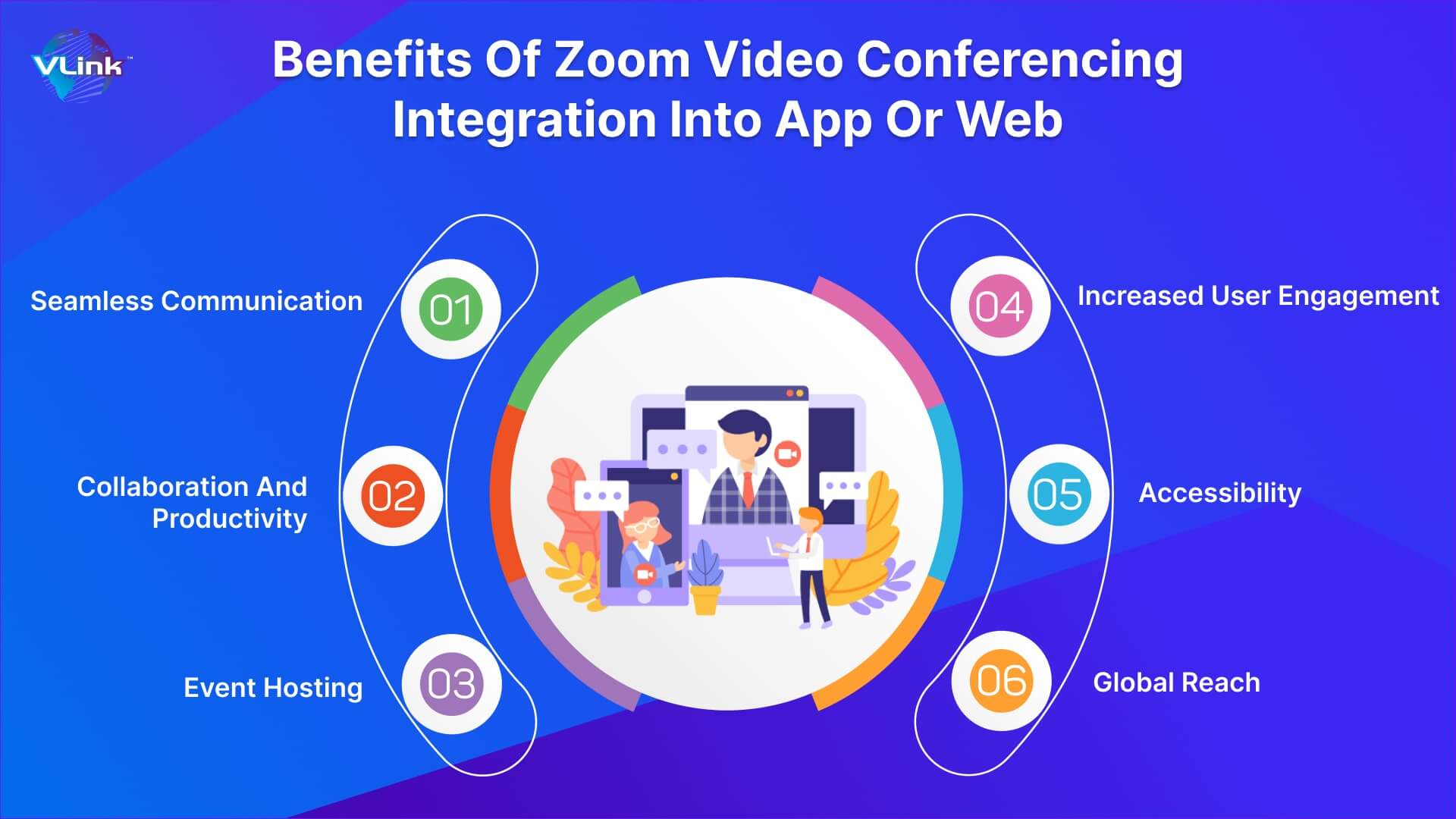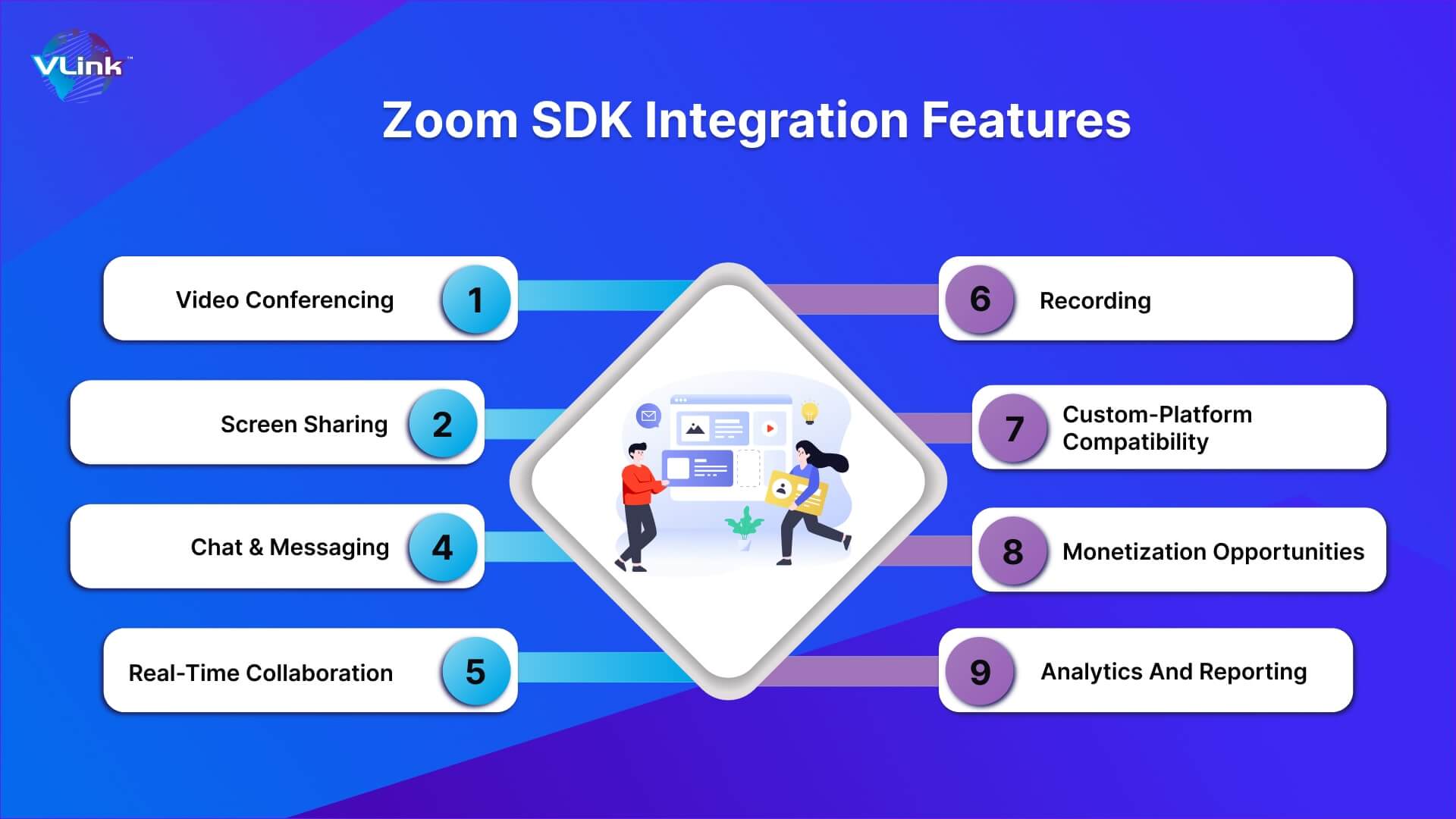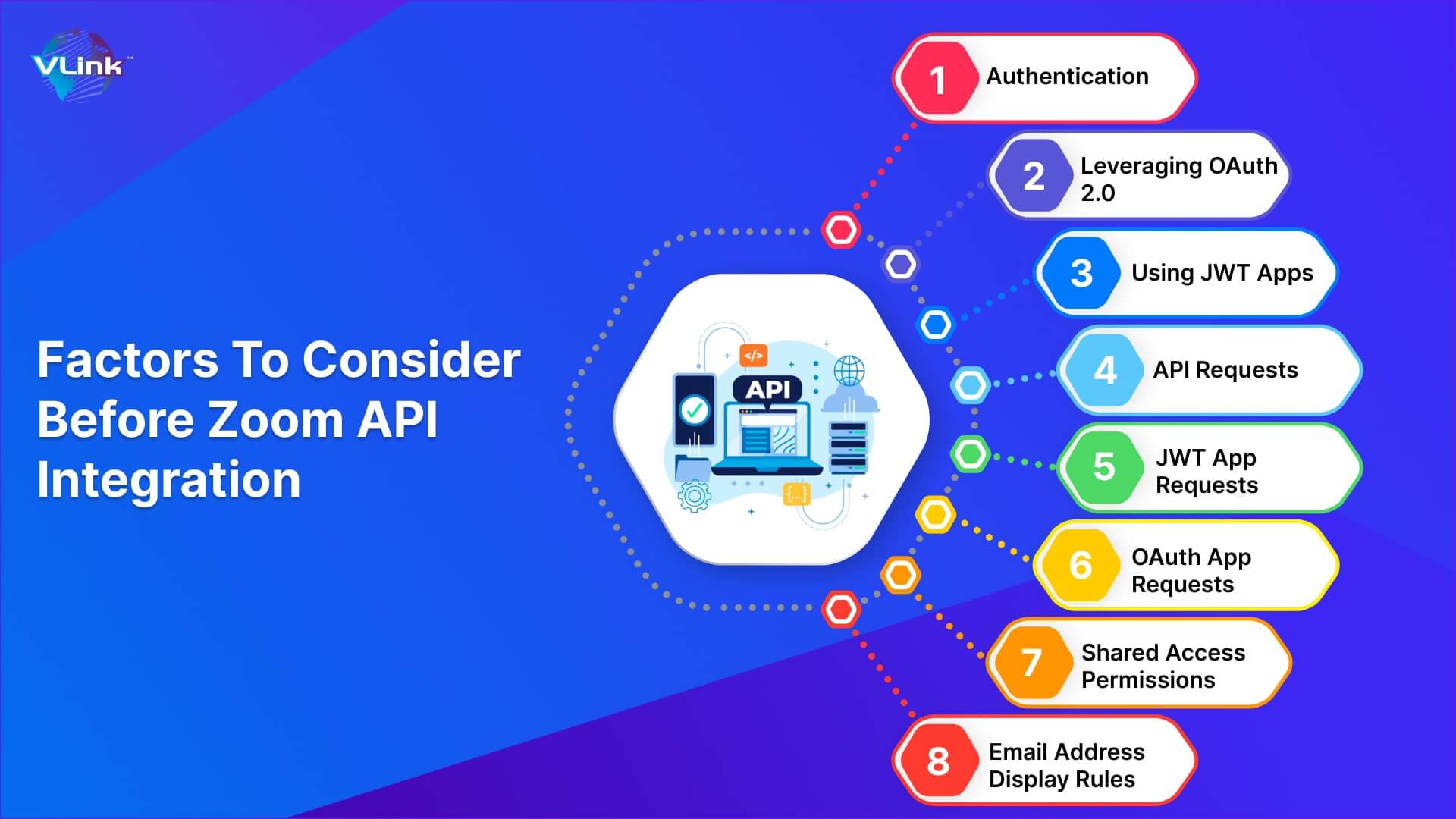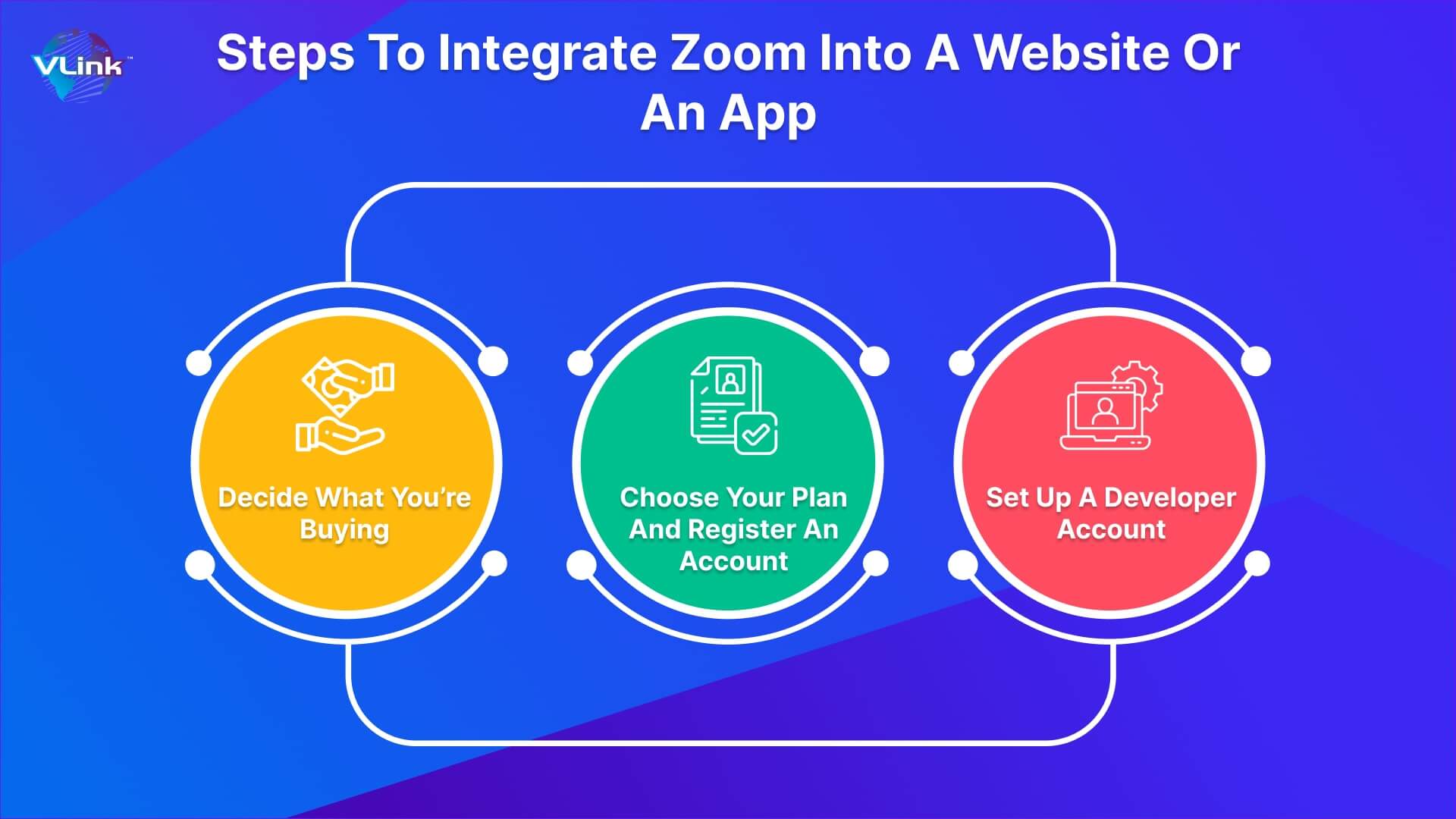The demand for virtual communication and collaboration via audio/video chats has become more prevalent than ever! Thanks to the remote working era, all types of communication, from private conversations to doctor consultations to corporate meetings, are taking place digitally.
Zoom, one of the leading video conferencing platforms, has gained immense popularity for its user-friendly interface and feature-rich solutions. Zoom generated $4.3 billion in revenue in 2022, a 7.3% increase year-on-year.
If you want to enhance your website or mobile app with video conferencing capabilities, integrating Zoom SDK/API can be a game-changer. In this blog post, we'll learn everything you need to integrate Zoom into your website or application.
Let’s first start with reasons to invest in Zoom integration into a website or app:
Why Is It a Good Idea to Integrate Zoom into Web or App?
Integrating Zoom into a web or mobile app can offer several benefits based on the specific users’ needs. Here are several reasons why you should embed this conferencing app into your website or application:|

Users may easily connect in real time using Zoom's high-quality video and audio-conferencing features. By integrating Zoom, users will no longer need to switch between various programs in order to participate in meetings, webinars, or video conversations.
Your app's ability to incorporate video conferencing can improve user retention and engagement. If your app allows users to access services like webinars or virtual meetings without leaving your platform, they are more likely to stick around.
The collaboration tools provided by Zoom include screen sharing, chat, and file sharing. By integrating these features, you can improve your app's collaborative capabilities. It makes video conferencing a more useful tool for groups and organizations.
Integrating Zoom can offer a secure and scalable platform for your app's event, webinar, or online course hosting needs. Events with a large number of attendees may be held with the help of Zoom's webinar and large meeting features.
Zoom offers keyboard shortcuts, screen reader assistance, closed captioning, and other accessibility features. By integrating this video conferencing platform, you can make sure that more people, including those with impairments, can use your software.
Zoom supports a large number of platforms and devices and is accessible in different languages. Your app may reach a worldwide audience by integrating this conference video call app, as the platform makes it simple for people from various locations to connect and converse.
Increase your productivity, ROI, & customer satisfaction with Salesforce integration solutions.
Zoom Integration into Website or Mobile App!
There are two ways to integrate Zoom into one’s platform, whether a website or a mobile app:
Zoom API
Zoom SDK
Let’s know about both integration ways in detail:
Also Read: A guide on an AI integration for business processes.
What is Zoom API?
The Zoom API depends on the Rest API and GraphQL API. Developers use this video conferencing app API integration during the process of mobile app development for business. They can use the API to integrate video, voice, and screen sharing into their software.
Here are some of the key functionalities of Zoom API for experts:
Meeting: A dedicated development team can build, join and organize meetings through Zoom API integration.
Zoom Phone API: IT experts may access and control Zoom Phone through the RESTful Zoom Phone API. It allows the development of unique apps and integrations that enhance Zoom’s functionality.
Contact Center: Experienced developers can access data from the Zoom video conferencing app contact center.
Video SDK: The Video SDK provides various services, including streaming video, audio, screen sharing, chat, and data feeds.
Zoom IQ: It’s an intelligent companion that summarizes chats, organizes ideas, and drafts content for chats, emails, and whiteboard sessions.
Marketplace: The Zoom marketplace helps users find applications that can be embedded with Zoom, improving user experience.
SCIM2: Zoom-built SCIM2 (System for Cross-domain Identity Management) automates the supplying of user identities across various cloud-based applications.
GraphQL: It’s a query language for API (Application Programming Interface).
What is Zoom SDK?
Zoom SDK is a full-fledged software development kit that allows the integration of video-conferencing features into an app or website. This integration enables your team to use Zoom’s HD audio & video capabilities on the web, Android, iOS, macOS or Windows.
The integration of Zoom's SDK enables several features, as shown in below figure:

Zoom API VS. Zoom SDK Integration
Here are the major differences between Zoom API and Zoom SDK integration:
Factors | Zoom SDK | Zoom API |
| Integration Approach | It allows you to implement Zoom's functionality directly into your app. | It offers a RESTful interface that allows you to interact with Zoom's services from your app. |
| Customization & User Experience | It provides more control over the meeting UI for customized UX to meet app's design. | It offers limited customization options |
| Features & Functionalities | Real-time video and audio communication, screen sharing, chat and more | Creating and managing meetings, managing participants, retrieving meeting details
|
| Real-Time Communication | It allows for seamless video conferencing experiences. | It mainly focuses on organizing Zoom's services programmatically. |
| Security & Authentication | It securely authenticates users within your app using OAuth or JWT. | It secures access to Zoom's services using OAuth or API keys. |
| Development & Implementation Time | Requires more development and implementation time | Requires less development & implementation time |
Zoom API Integration: What You Should Consider Before Start

Zoom video conferencing app must authenticate each HTTP call to the Zoom API. This authentication is possible through the OAuth 2.0 authorization protocol.
Want to make your application secure? Learn about seven ways to build a security into mobile app development lifecycle!
Through the Zoom API, this protocol enables programs to ask Zoom for information. Resource owner, resource server, client, and Zoom authorization server are the four roles it supports.
It is advisable to use a JSON Web Token to generate API queries to the Zoom API. It enables developers to build tokens for safe data transport.
HTTPS is required to complete this video conferencing API integration request.
You can indicate the user’s ID or email address to handle JWT app requests.
You can handle OAuth app requests by using the keyword ‘me’ as the value of the user’s ID.
Users can access, edit, or delete information associated with other Zoom accounts.
Zoom displays email addresses for users outside of your account when appropriate.
These considerations above will help you in the subsequent Zoom web SDK integration with your website or app.
How to Implement Zoom Video Conferencing SDK into Your Website or App?
Here are three main steps you need to follow when implementing Zoom SDK into your website or app:

Step #1 - Decide What You’re Buying
Zoom offers two different services with different purposes:
Zoom Video SDK
It’s not compatible with Zoom Meetings.
It has support for custom meeting UIs.
It’s suited for integrating video conferencing into a website or an app.
Zoom Client SDK
It integrates Zoom Meetings with a website or app.
It doesn’t offer raw video or audio data.
It connects your user to the more extensive Zoom infrastructure.
It’s ideal for an online event organizer who wants to get a user-friendly solution.
Step #2 - Choose Your Plan and Register an Account
Zoom video conferencing app has two plans for its Video SDK users:
$1,000/year with 30,000 minutes per month included and $0.003 per minute after that
Ten thousand minutes are included in a pay-as-you-go plan with no upfront costs, and after that, each additional minute costs $0.0035.
All Pro, Business, and Enterprise customers have free access to the Client SDK.
The least expensive Client SDK plan is Zoom Pro, which costs $150 a year.
The Zoom Business package starts at $200 per year.
The costliest Client SDK package, Zoom Enterprise, costs $240 annually.
Step #3 - Set Up a Developer Account
The website for Zoom will direct you to register as a developer. You should be aware that the Video SDK requires different credentials and cannot be used with an existing developer account.
Look at the following steps to create a developer account in the Zoom video SDK:
Log out of your Zoom Developer account if you already have one.
Click the Buy Now button on the Video SDK page. You will then see the page for the "Video SDK Plan."
Select the tariff strategy that works for you. Select "Continue"
For guidance on creating a Video SDK developer account, go to the on-screen prompts.
Review the Terms of Service and then press Continue.
Once you've reviewed your order, click the Submit button.
Also Learn: Top 8 ways to implement AI in product development.
Partner With VLink to Integrate Zoom API/SDK Into Website or Mobile App!
Whether you integrate the Zoom SDK or build a video conferencing app, you need experts in video conferencing websites or mobile app development services. That’s where VLink comes in!
VLink is a reliable mobile app and website development company that’s experts in successfully delivering audio and video conferencing solutions for numerous clients worldwide. Our IT experts have experience in integrating Zoom video conferencing SDK/API into a website or app without any hassles.
If you want to know more about Zoom SDK/API integration, contact us!









 Shivisha Patel
Shivisha Patel

















